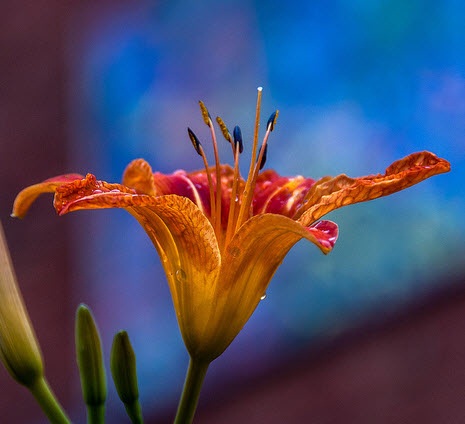Reproduction in angiosperms.
 This lesson begins with a short screencast activity to help students draw the structure of an idealised animal-pollinated flower. In nature the shape of flowers is very varied and many flowers have a shape which complements the adaptations of a mutualistic pollinator. This idea makes a nice 'dissection' Comparisons of different flowers helps students to understand the individual adaptations of flowers and their pollinator and also supports and understanding of the terms pollination and fertilisation.
This lesson begins with a short screencast activity to help students draw the structure of an idealised animal-pollinated flower. In nature the shape of flowers is very varied and many flowers have a shape which complements the adaptations of a mutualistic pollinator. This idea makes a nice 'dissection' Comparisons of different flowers helps students to understand the individual adaptations of flowers and their pollinator and also supports and understanding of the terms pollination and fertilisation.
Lesson Description
Guiding Question
Why do biologists describe the pollination of flowers by insects a mutualistic relationship?
Activity 1: Structure of flowers
Complete the ![]() Flower diagram student's worksheet to show the structure of a flower pollinated by animals.
Flower diagram student's worksheet to show the structure of a flower pollinated by animals.

Click the eye icon to show the screencast of how to draw this diagram.
Learn the labels
Study the eleven flashcards and then take the Quick Test from the teachers notes, or the self-marking online test
Activity 2: Dissection of flowers
This activity works best if there are three or four different types of flowers and so that students can compare results at the end.
- Carry out the experiment on
 flower dissection student worksheet .
flower dissection student worksheet . - Annotate the dissected flowers with details of the processes of pollination and fertilisation and take a photo to record the details as if it were a diagram.
Make a gallery of photos to show the diversity of flowers and pollinators
Click the eye icon to display the worksheet.
Activity 3: Pollination, fertilisation and seed dispersal
Key terms
Pollination is ….the transfer of pollen from anther of a flower to the stigma of a flower.
Fertilisation is …. When the pollen nucleus joins the egg nucleus to make a seed
Seed dispersal … is the scattering of ripe seeds from a fruit.
Watch this short illustration of the amazing co-evolution of plant and pollinator in the ![]() Bee orchid pollination video (Smithsonian)
Bee orchid pollination video (Smithsonian)
Watch this TED talk by ![]() Louis Schwartzberg on the beauty and seduction of pollination explains how the evolution of pollination illustrates one of the great wonders of the natural world and we need to take care of it.
Louis Schwartzberg on the beauty and seduction of pollination explains how the evolution of pollination illustrates one of the great wonders of the natural world and we need to take care of it.
Question
Explain what is so wonderful about the mutualistic relationships between pollinators and the flowers they pollinate, using two examples from the films.
..............................................................................................................................................................................
..............................................................................................................................................................................
..............................................................................................................................................................................
..............................................................................................................................................................................
Teachers notes
The simple diagram is designed especially as one which is easy for students to replicate under exam conditions. A more detailed diagram link is always given to support understanding and raise awareness of the beauty and complexity of biological systems.
For a little extra detail, this is a nice image of an idealised flower.
Some students can learn a diagram and it's labels easily, but many students need help to remember the precise shapes and sizes of the parts of each diagrams, and they need practice to get the labels correct and to understand the labels. The resources on this page aim to help teachers support these students.
These are some materials which didn't quite make it into the lesson planned above but which may be useful.
| IB style questions | ||
Extra resources
There are some great resources on flowers and pollinator on the web:

 IB Docs (2) Team
IB Docs (2) Team
